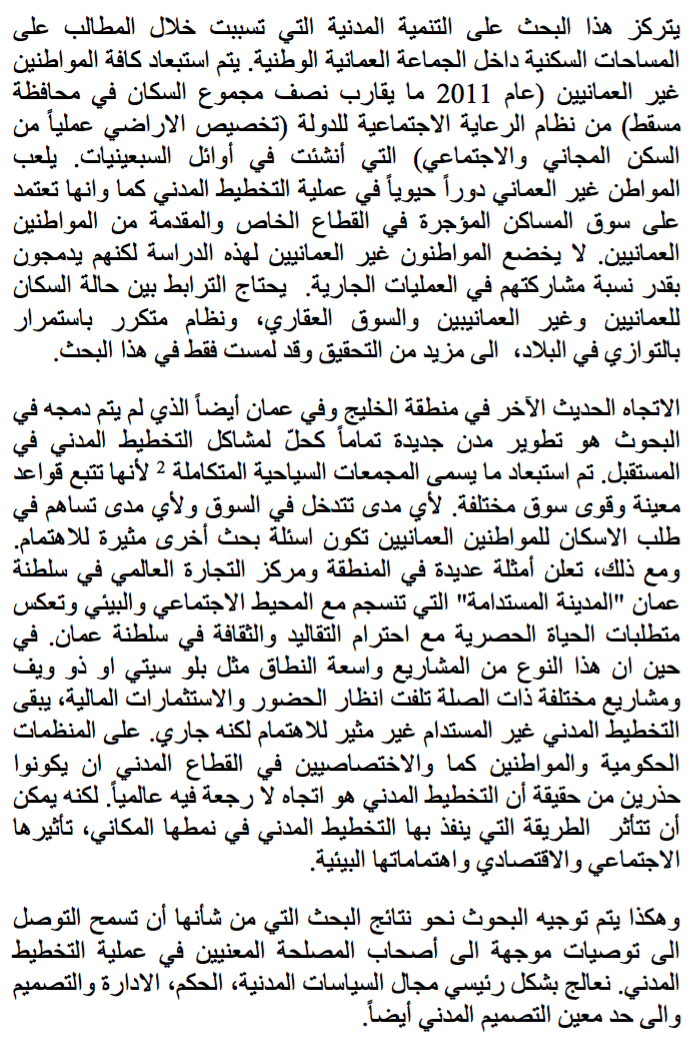Urbanization in Oman
During the past 4 decades Oman has been facing high population growth. In combination with considerable rural to urban migration urbanisation rate in the country has reached in 2009 84 % according to UN statistics. (United Nations Population Division 2001)
Urbanization patterns are characterized by dispersed and patchy settlement structures not only in the urban expansion areas of the Capital Area of Muscat but as well in the areas of rural to urban transition. The overall followed separation of functions is further augmenting mobility needs that are exclusively based on the car. Life style patterns are oriented towards the single villa on a walled plot as the most favourite residential building type.
These trends however meet limited resources mainly related to land. Due to the geophysical and climatic setting of the country 75 % of the countries total surface is covered by desert. Thus the remaining land has to be shared for different purposes of the Omani society. While land consumption by residential use, services and transport infrastructure is increasing steadily, suitable land for agriculture is decreasing supporting again rural-to urban migration or transition and thus creating again new demands on shrinking land resources.
This roughly described 20th century-type of urbanization has been surpassed by the early 21st century- type that is focusing on complete new cities for 200.000 to 300.000 inhabitants. In the GCC countries and in Oman a number of new cities are under construction claiming to become sustainable cities, at least from its environmental point of view. While much attention is paid to this new urbanization trend, the resource consuming 20th century urbanization processes go ahead and have to be considered as responsible for creating an irreversible facts in Oman.


